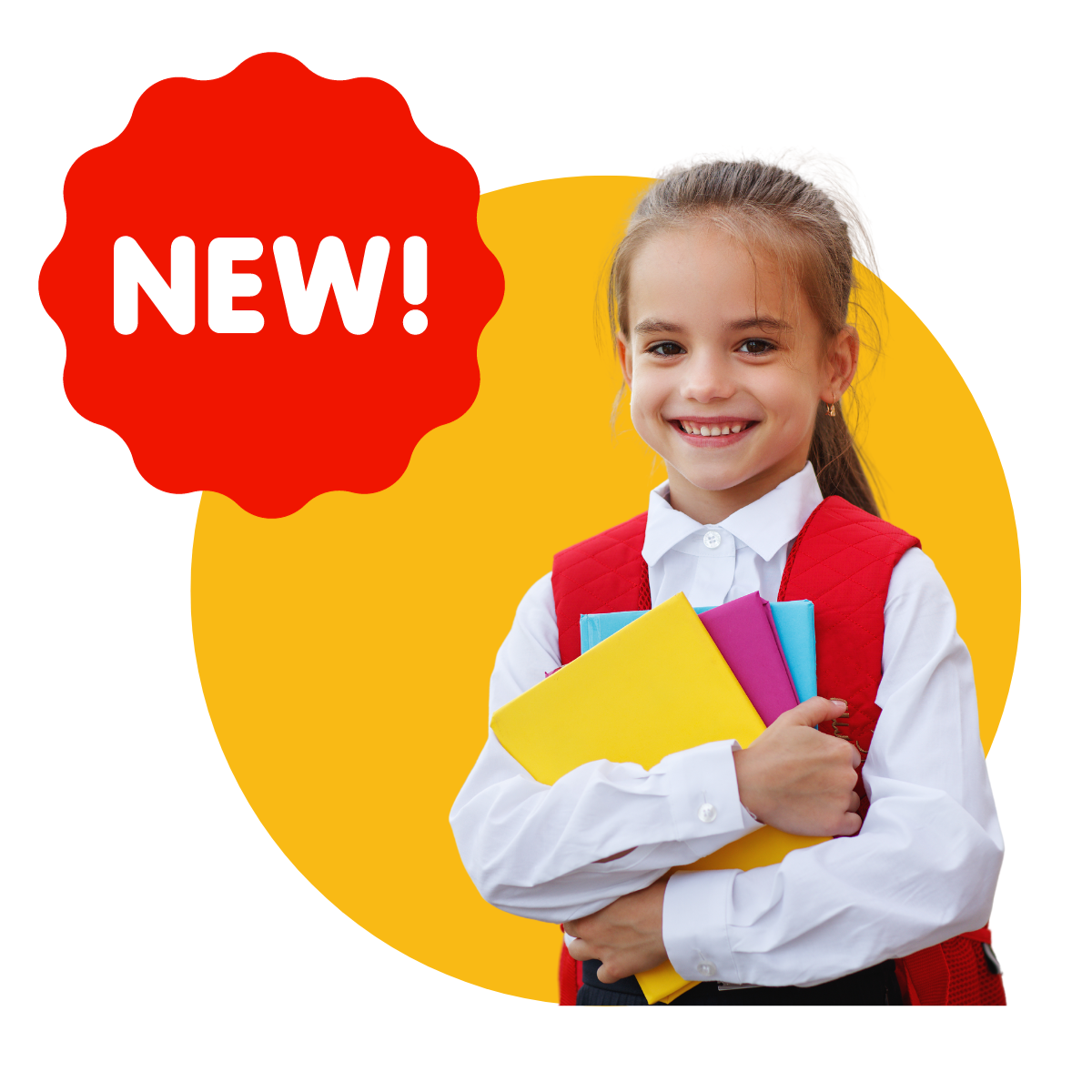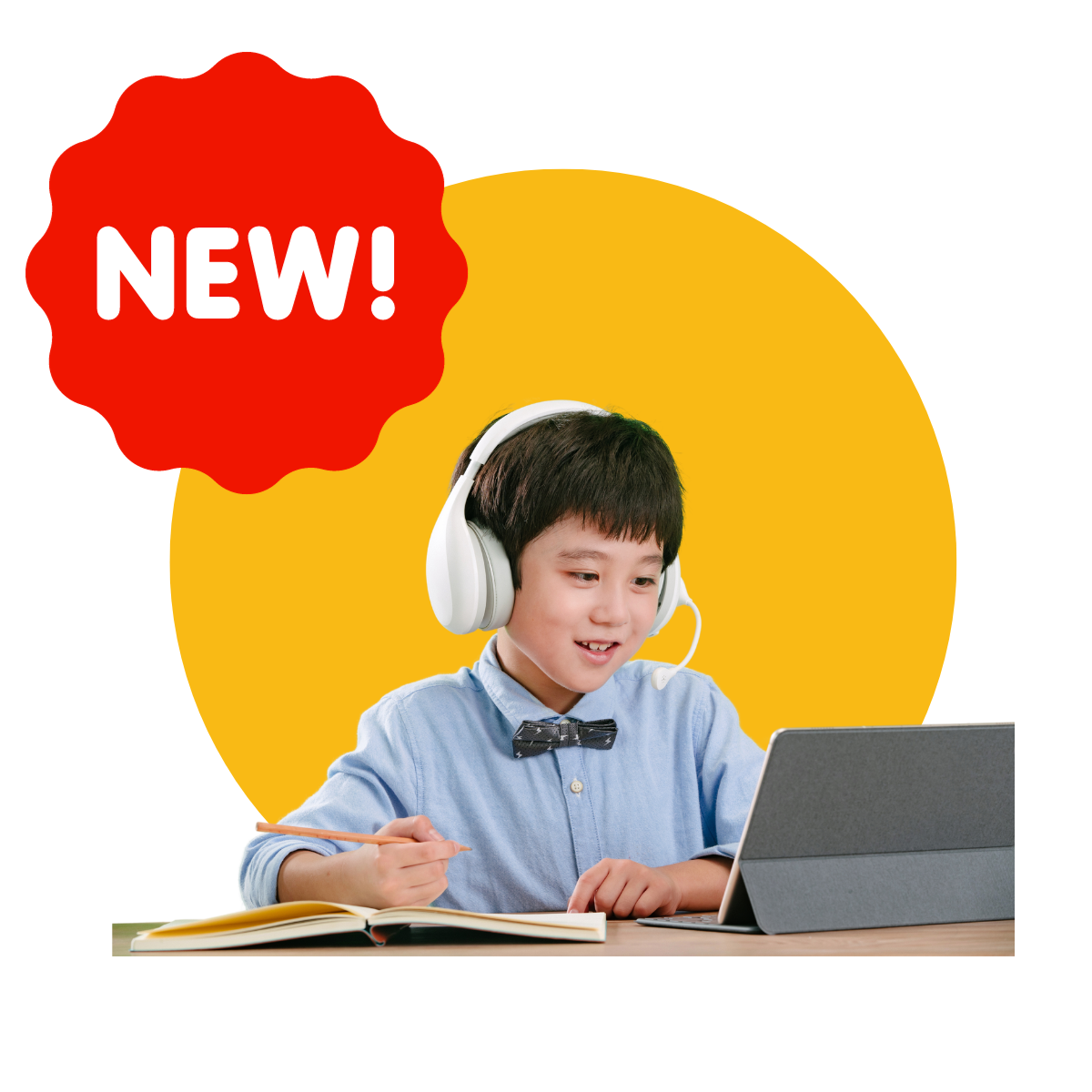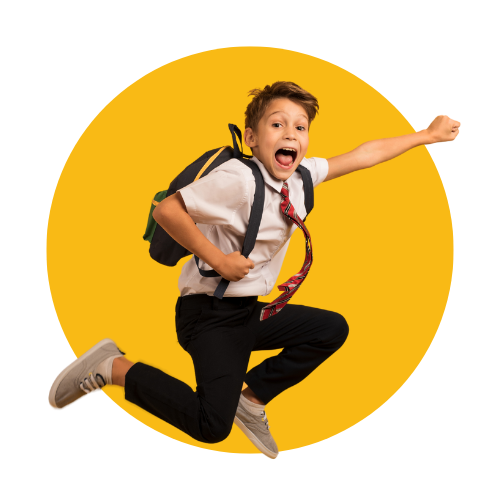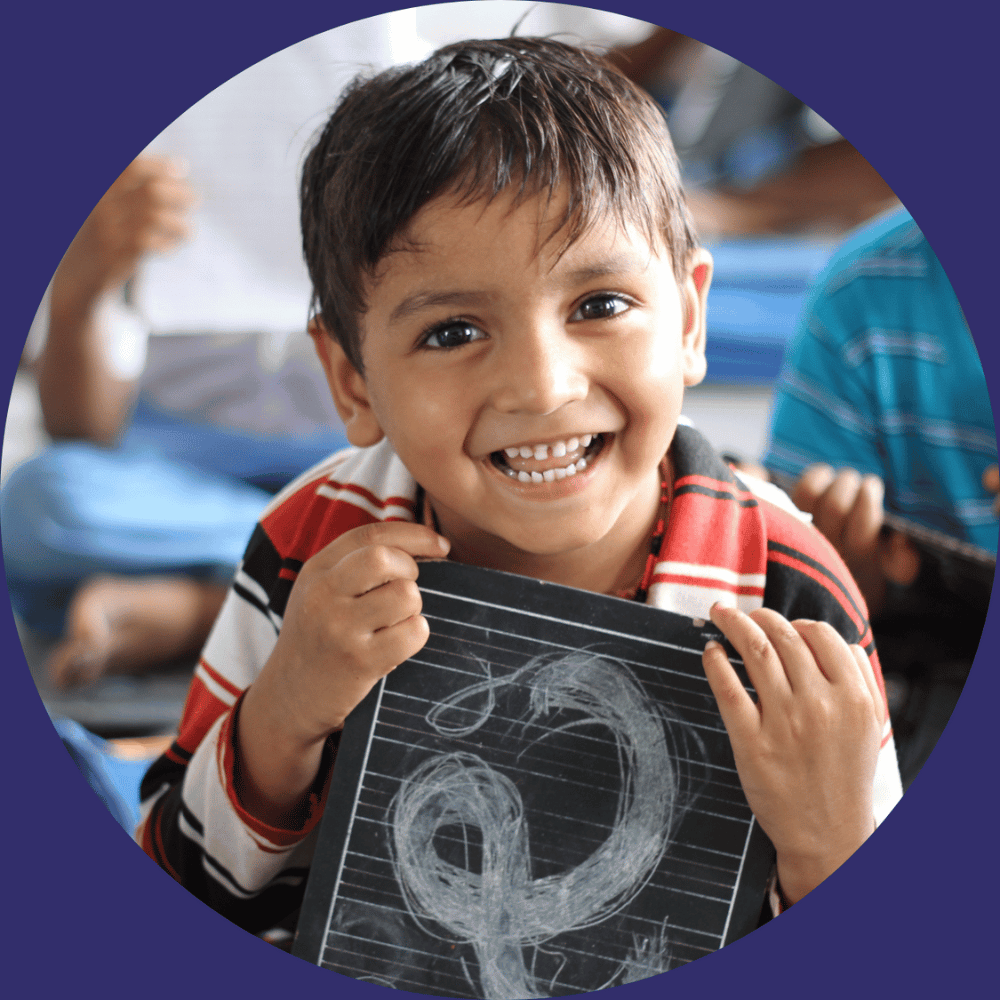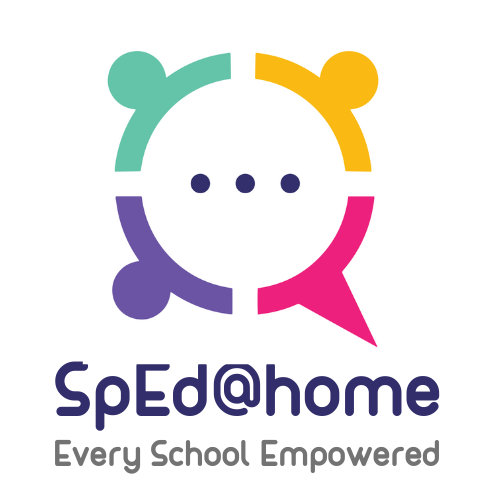Autism spectrum disorder (ASD) is described as a neurodevelopmental condition that leads to impaired social communication skills, repetitive behavioral patterns, and obsessive areas of interests. ASD is usually diagnosed as early as 2 years of age but many children grow well into adulthood without having being officially diagnosed.
Early diagnosis and timely intervention can significantly help manage autism in children. Occupational Therapy can play a great part in achieving this outcome.
What Is Occupational Therapy?
Occupational Therapy is a holistic therapy which treats children who may be healing from injuries, disabilities, and other developmental disorders like Autism. Typically, Occupational Therapists work towards development, recovery, and maintenance of the child’s ability to carry out daily activities and social interaction.
Occupational Therapy begins with the therapist sitting down with the child and their parents to be able to better understand their needs. This is followed by a thorough assessment of the child’s emotional, sensory, and cognitive needs to help develop achievable goals through a comprehensible treatment plan. The Occupational Therapist then works one-on-one with the child to ensure consistent progress.
Occupational Therapy and ASD
Occupational Therapists monitor children with autism and aim to improve their ability to regulate their emotions so they can be part of social interactions, seamlessly. Occupational Therapists evaluate the following skills to determine whether a child is on the Autism spectrum.
- Social interaction: Interaction between peers.
- Communication: Non-verbal communication like body language.
- Cognitive: stamina, attention span.
- Sensory: response to stimuli and sensory defensiveness.
- Motor: Balance, posture, handling of small objects.
Once the Occupational Therapist has assessed the requirements of the child, they design a customized therapy plan to ensure the child can improve in areas they need the most. This helps the child to manage symptoms and grow in a safe and understanding environment that promotes their need to thrive.
The primary difference between Asperger’s and Autism is that children with Asperger’s display less severe symptoms than Autism. It is important to note that Asperger’s is no longer a diagnosis and that it is recognized under the Autism Spectrum. However, to understand both disorders, we will be using the terms Asperger’s and Autism throughout the rest of this article.
What is Asperger’s Syndrome?
Children with Asperger’s Syndrome show signs of difficulties with understanding social cues and functioning in society. They have almost no trouble with learning development and their symptoms are far less severe as compared to children with Autism.
What Are The Signs & Symptoms Of Asperger’s?
Asperger’s symptoms are notably similar to those exhibited by autistic children. These are known to develop in early stages of childhood when one’s brain is still developing. Asperger’s symptoms include but are not limited to the following.
- Difficulties in social interactions.
- Difficulties in understanding body language and other forms of non-verbal communication.
- Restricted interests.
- Unhealthy fixations, obsessive interests.
- A lack of social awareness.
What Is Autism?
On the other hand, autism spectrum disorder, or ASD, is described as a neurodevelopmental disorder that displays mild to severe symptoms including repetitive behaviors, impaired social communication, restricted interests, and rigidity.
While there is no single cause attributed to autism, it is likely to be genetic, prenatal, or due to complications during childbirth and other environmental factors the child faces while growing up. Autism can affect almost anyone and many people are known to not have been diagnosed well into adulthood.
Autism cannot be cured but it can be significantly improved through early detection and aid. Both early diagnosis and treatment are considered crucial factors when it comes to improving autism.
What Are The Signs & Symptoms Of Autism?
The signs and symptoms of autism are based on one’s social communication and result in making it very difficult for them to adjust and relate to their peers.
Symptoms of autism include but are not limited to the following:
- Refuses eye contact.
- Doesn’t respond to their name.
- Doesn’t use non-verbal communication or hand gestures.
What is Asperger’s Syndrome?
Asperger’s Syndrome is a development disorder where children/young adults experience a rigid thinking pattern and may show signs of not being able to relate to their peers and societal norms.
Typically, children with Asperger’s syndrome have no trouble communicating and generally do well in academics. However, they tend to have trouble when it comes to understanding and responding to subtle forms of communication like body language, sarcasm, and humor. They tend to fixate on certain topics and talk about that on end or want to be associated with a small pool of activities. Their interests may lead them to become obsessive and keep them away from a healthy social circle or recreational outlet.
It has also been noted than boys between the ages of five and nine seem to be more like to develop Asperger’s Syndrome than girls. Many children are also diagnosed as early as age three.
What are the symptoms of Asperger’s Syndrome?
Children with Asperger’s Syndrome show signs of poor social interactions, fixations, strange speech patterns, small range of facial expressions, and sensitivity to sensory stimuli. Other symptoms include the following:
- Avoiding social interactions.
- Talking about oneself or a certain topic.
- Not responding appropriately to emotions.
- Not understanding body language.
- Becoming deeply affected by small changes in routines.
- Clumsy.
- Difficulty in emotion management.
- Not being able to understand another person’s feelings.
- Hypersensitivity to sensory stimuli.
It should be noted that children with Asperger’s Syndrome do not experience any delays in academic development. They do however show problems in using language in social context, have a short attention span, and have average intelligence.
What is ASD- without intellectual or language impairment?
The symptoms of Asperger’s Syndrome are included in autism spectrum disorder. While the term Asperger’s Syndrome is still prevalent, the term ASD- without intellectual or language impairment.
If you are a parent who is concerned about if their child is showing signs of ASD, it is recommended to see a pediatrician who can suggest the right course of action to understand the symptoms and consequent diagnosis of the disorder. Usually, an assessment followed by a test is conducted by both medical and psychological experts to assess the child’s social interaction, language, and intellectual abilities.
To understand ADHD and its impact on an individual, it is important to understand what it entails.
Attention-Deficit/Hyperactivity Disorder (ADHD) is a neurodevelopmental disorder that affects a person’s ability to focus, pay attention, and control their impulsivity and hyperactivity. It is one of the most common childhood disorders and can continue through adolescence and adulthood.
Children with ADHD may have difficulty paying attention, following through on tasks, and controlling impulsive behaviour. They may also be hyperactive and have difficulty sitting still. These symptoms can make it challenging for them to succeed in school and in social situations.
The impact of ADHD on a child’s development and daily functioning can vary depending on the severity of the symptoms. Often, children with ADHD may have difficulty completing homework, following through on tasks, and staying organized. They may also have difficulty with time management and struggle to meet deadlines. They may have difficulty understanding social cues and end up interrupting others or have difficulty waiting their turn.
It is important to note that children with ADHD have unique strengths and abilities just like any other child. Some children with ADHD are often known to be creative, spontaneous and have a strong sense of humour.
To support a child with ADHD, parents, caregivers, and educators should work closely with a qualified professional, such as a paediatrician, a psychiatrist, or a psychologist, to develop a treatment plan that addresses the child’s unique needs. This can include medication, therapy, and behaviour management strategies.
It is also important for parents, caregivers, and educators to understand that children with ADHD are not lesser or less capable than their peers. With the right support and accommodations, children with ADHD can succeed in school and in life.
In conclusion, understanding the specific diagnosis of ADHD in a child and its impact on their development and daily functioning is essential for parents, caregivers, and educators. It is important to remember that every child is unique and that ADHD does not define a child’s abilities or potential. With the right support, children with ADHD can succeed and reach their full potential.
The term Autism comes from the Greek word autos which means “self” – thus, in a way, making those affected by it “isolated selves”. It’s a developmental disability that appears before the age of three.
Types of Autism
There are five types of Autism which are largely divided into two categories, high functioning Autism, and low functioning Autism.
How is it diagnosed?
There is no particular way that Autism is medically detected and there is no cure for it. It is difficult to diagnose because there are no specified or prescribed tests or ways to detect it. Autism is mainly detected by observing children, their symptoms and interviewing parents, though certain standardized tests are also involved.
Click here to book an assessment
Detecting Autism in toddlers
You as a parent may need professional help if your child does not reach these milestones or doesn’t show them later on:
-
- Smiling by six months.
-
- Imitating facial expressions or sounds by nine months.
-
- Coos or babbles when 12 months old.
-
- Gestures by 14 months of age.
-
- Speaks in single words by 16 months and uses expressions of two words or more by 24 months.
-
- Plays “make-believe” by 18 months.
Few symptoms of Autism
-
- Evading eye contact.
-
- Having little or no interest in other children or caretakers.
-
- Inadequate demonstration of language (for example, having fewer words than peers or difficulty with the usage of words for communication).
-
- Getting saddened by minor changes in routine.
Behavioural patterns in Autism
-
- Repetitive and restless gestures
-
- Obsessions with certain objects
-
- Extremely sensitive to lights, touch and sound
-
- Fussy about food
-
- Poor coordination
-
- Aggression
-
- Poor attention
Effects of Autism
Social-Emotional difficulties
-
- They are socially withdrawn; they prefer to be alone.
-
- They avoid eye contact and touch.
-
- They are emotionally less aware of themselves and others.
-
- When they’re upset, they like to be left by themselves.
Effects in communication
-
- Around 40% of children with Autism are not able to speak, some lose their communication skills with time and some speak later.
-
- Repeating sentences.
-
- Minimal use of gestures.
Strategies to handle Autism
Early interventions in Autism lead to better results in children. Interventions need to be
Taking Autism positively
-
- Autistic children are very passionate about their wide range of interests, they dig deep into their favourite subject until they feel satisfied.
-
- They are honest about what they feel.
-
- They have different perceptions of the world and interpret information in unique ways.
-
- They have an eye for detail and pay attention to things that others may overlook.
-
- They love routines and follow them religiously.
-
- They have an excellent memory and a great ability to recall facts.
-
- They tend to be visual thinkers with above-average intelligence, have their own set of social rules and take great pride in their authenticity.
Supporting children with Autism
As parents, you are the first source of comfort for your child and rush to you whenever in need. So, here are a few of the things you can do, to reassure them:
Try to understand them, allow them to express their most inner needs. Help them with coping and calming skills and also assist them to preserve and build new routines.
Lesser-known facts about Autism
-
- Boys are five times more prone to Autism than girls.
-
- Autism in girls has not been researched adequately.
-
- Pregnancy issues are also not a cause for Autism.
-
- When Autism is addressed and managed well in early childhood, your children can go on to become responsible and independent citizens who contribute to society.
-
- Children with Autism can be very creative, especially in fields like music, theatre, art, dance and singing.
Dysgraphia
Dysgraphia is a learning disability where children find it difficult to write properly, spell words and select the right words to use.
Symptoms of Dysgraphia
Different symptoms of Dysgraphia are seen in children of different ages. Some may have problems with handwriting while some may be facing issues with spelling. You can look for the following indicators or symptoms while your child is writing.
- Handwriting that is not legible
- Odd spellings
- Wrong capitalization
- A combination of cursive and print writing styles
- Using incorrect words
- Removing words from sentences
- Writing slowly
- Feeling tired after writing short sections
- Incorrect size of letters
- Inappropriate letter spacing
- Finding grammar and sentence structure difficult
- Uncommon position of the body or hands while writing
- Speaking words aloud while writing them down
- Looking at the hand while writing
- Tight pencil grip
- Tendency to avoid tasks involving writing or drawing
- Trouble taking notes at school
Types of Dysgraphia
Motor Dysgraphia:
Children with Motor Dysgraphia have weak motor skills, coupled with weak dexterity.
Spatial Dysgraphia:
This learning disability refers to the trouble with spatial awareness. Children with spatial dysgraphia find it difficult to judge space between lines and use the right amount of space between words. Any written form of content from them is usually not legible.
Phonological Dysgraphia:
In this learning disability, children experience difficulty in writing and spelling, especially with unfamiliar, jumbled, and phonetically irregular words. Children with Phonological Dysgraphia find it hard to retain similar sounding words in memory and put them in the right sequence to produce the target word.
Lexical Dysgraphia:
Lexical Dysgraphia is seen when a child can spell but uses standard phonemes (distinct units of sound that differentiate words from each other) with mistakes in irregular words.
Occupational Therapy for Dysgraphia
Diagnosis
As parents, you may need many specialists, including a family doctor or pediatrician, an occupational therapist, and a psychologist to diagnose dysgraphia in your child.
A doctor will have to rule out other conditions that could cause writing problems for your child. Once this is done, a psychologist who specializes in learning disorders can diagnose dysgraphia.
Tests include:
- Academic Tests
- Fine Motor Skill Trials
- IQ Tests
- Writing tests
During these tests, the specialist observes the person’s pencil grip, hand and body position, and writing process. They also examine the finished parts for signs of dysgraphia, in your child.
The American Psychiatric Association’s Diagnostic and Statistical Manual of Mental Disorders ( DSM ) criteria for diagnosing specific learning disorders, such as Dysgraphia is that the set of symptoms should be present for at least six months, while the right interventions are in place.
There is no cure for Dysgraphia, but you can learn to handle your children’s symptoms to make school and lifeless challenging for them.
Occupational therapy
Your children can learn specific skills and techniques to make writing easier and can improve their fine motor skills and may relearn how to hold a pen or pencil to enable better writing.
Strategies relating to classroom tools:
- Try different writing tools and grips e.g. pens, pencils
- Make your children write on paper with raised lines to help them stay within the lines
- Let them read from printed lesson outlines in class to ease note-taking
Strategies for directing children in school
The way your child’s teacher delivers a lesson or introduces an assignment can impact his/ her comprehension and results. As a parent you can make their teachers aware of the following methods:
- Allowing ample time to complete assignments
- Filling in the name, date, and title of assignments beforehand
- Elaborating how each element is graded
- Sharing earlier assignments and grades
- Giving solutions to written assignments
Strategies for finishing projects:
Your child can use technology and support systems to complete assignments using:
- Dictation software while writing
- Requesting for a proofreader to check work
- Typing assignments on a computer
- Asking for extra time for tests
Dysgraphia and mental health
Learning disabilities can cause the following problems for a child:
- Fears
- Worry
- Sleep issues
- Irritation
- Feelings of sadness or hopelessness
- Social withdrawal
- Loss of appetite
- Thoughts of self-harm
If you see these signs, get in touch with us and talk to our experts. And remember, your child’s journey of improvement and development starts with your decision.
One out of ten children are affected by Attention deficit hyperactivity disorder, (ADHD) yet many misconceptions persist. ADHD is defined as a mental health disorder that can cause above-normal levels of hyperactive and impulsive behaviour.
There exist three different types of ADHD:
- Predominantly Inattentive Presentation
- Predominantly Hyperactive-Impulsive Presentation
- Combined Presentation
Because symptoms can change over time, the presentation may change over time as well. The Symptoms of ADHD include: being unable to sit still–especially in calm or quiet surroundings, constantly fidgeting, being unable to concentrate on tasks, excessive physical movement, excessive talking, and interrupting conversations.
ADHD is a brain disorder. It is nearly impossible to overcome the symptoms of ADHD just by trying to concentrate harder or by willing themselves to pay attention. Recent brain imaging studies have revealed that people with ADHD have structurally different brains than people without ADHD. It can be hereditary. Children whose parents have ADHD have a 40% to 60% chance of also having ADHD. Sometimes a child’s diagnosis can be the first clue that a parent may have ADHD.
Research-based therapies can relieve symptoms of ADHD. Some of the most effective therapies are medication, behavior therapy, education training, and ADHD coaching.
Preparing yourself and your child for ADHD treatment and medication can be a tough and strategic task. To address this challenge you can opt for any of the following strategies
- Behaviour management plans for children with ADHD
- Behaviour strategies to help children with ADHD
- Social skills to help children with ADHD
- Strategies to manage energy and tiredness in children with ADHD
- Classroom strategies to help children with ADHD
- ADHD medications
It is crucial to understand that while caring for your child suffering from ADHD, it is also very important to care for yourself. Asking for help and support is a big part of managing your child’s ADHD. Reach out for help from family members and friends. Speak to your child’s teacher about classroom behavior strategies that you can try out at home. You can also contact a support group for parents of children with ADHD. Talking to your child’s health professional about any difficulties you have can be of great assistance.
This is surely a learning process for you and your child, enjoy and cope together.
A lot of people have fears and worries in life. These are natural feelings we all experience time and again. However, for some people, these fears and worries dictate how they live life. They govern their choices which influences their behaviour. Anxiety is the inability to deal with a fear or worry about something in the future. Ironically, most of these negative impressions are formed in a child’s formative years. Anxiety can be debilitating and can often lead to depression.
Anxiety in children
There are several ways in which anxiety manifests in children and different children respond differently. Some commonly observed symptoms are:
- Disturbed sleep
- Inability to focus, avoiding tests or procrastination.
- Panic Attacks
- Profuse sweating, restlessness, and palpitations
- An upset stomach, headaches
- Being extremely needy
- Avoiding social settings
What causes Anxiety?
Now that we have understood what anxiety is and what it looks like, let us spend some time understanding what causes anxiety.
- Some children are just born with a low threshold to deal with negative emotions and are extra sensitive to stimuli around them.
- At times children learn anxious behaviours from people around them. “Children see, children do.”
- Anxiety can be caused by certain stressful or traumatic events in life:
- High expectations from parents
- Being bullied in school
- Experiencing physical or verbal abuse or being neglected at home.
- Being beat up for scoring fewer marks / failing a test or exam
- Frequently moving houses
- Death of a close family member or friend
- Being involved in a serious accident
- Not being able to do things quickly or as effectively as other children. (Especially in children with learning disabilities)
Children with learning disabilities or ADHD are more likely to feel anxious than others. So much of the working memory of these children is spent on making sense of what is happening around them or occupied with irrelevant noise and distractions that it becomes hard for them to self-regulate and problem solve.
Tips to handle anxiety.
Anxiety is not like an infection that can be cured with antibiotics. Anxiety is more like a common cold; it comes with time to time and again. One cannot cure it with medication but simply manage it as best as possible while it lasts. Often parents want to cure their children of anxiety but sadly that is not how it works.
There are a few things that are critical to an understanding before you can try and manage your child’s anxiety:
- Anxiety is usually triggered by a certain thought, feeling or event; it can be different things for different people.
- Anxiety is usually about something in the future.
- Anxiety releases two hormones in our body: Cortisol and adrenaline. Cortisol is the stress hormone and adrenaline triggers the fight or flight response in the body.
Handling anxiety – General strategies
The key to manage anxiety is doing these three things:
- Bring the child back to the present moment
- Trigger the parasympathetic nervous system in the body
- Exercise and physical activity
Bring the child back to the “here and now” (present moment).
When anxiety sets in, our thoughts are predominantly about the future. Get your child to come back to the here and now by doing this simple “location exercise”.
Ask them to describe what they see around them. For example – “The table is on my right, there is a fan above me, I’m sitting on the floor so on and so forth.” This ensures the future thinking stops and the child comes back to the “here and now”.
Trigger the parasympathetic nervous system in the body.
The parasympathetic nervous system undoes the work of the sympathetic nervous system which gets triggered by anxiety or stress. A simple thing one can do to activate the parasympathetic nervous system is deep breathing: an underrated yet extremely effective way to manage anxiety.
Exercise
Any kind of intense physical activity releases endorphins and dopamine which are the happy hormones and automatically reduces cortisol levels in the bloodstream.
Handling anxiety in children under ten
Other than the strategies touched above, the below two strategies work well for younger children.
Physical touch
Physical touch from a parent offers the child immense comfort and much-needed oxytocin, again a feel-good hormone. Hugging your child, applying pressure on them with blankets also works great. It releases the anxiety and gives relief to their mind.
Divert their attention
Keep picture books, colouring books or toys around for them to immediately divert their attention.
Handling anxiety – children with Autism
Quiet time
Quiet time in the morning is a great way to start the day. Looking out of the window or balcony and just being.
Self-management
You can teach them self-management strategies to cope with sudden situations. E.g. Deep breathing, the “location exercise” or meditation
Comfort toy
Have a comfort toy around your child? It gives them certainty and comfort.
Try establishing an emotional bond with your child, allow them to express their thoughts and feelings freely, be gentle with them when they make mistakes and be patient.
Does your child struggle at school? Does reading, writing or tackling a math problem baffle your child? These can be the signs of a Learning Disability.
Did you know?
- Around 5-9% of the population has a Learning Disability
- Dyslexia is the most common Learning Disability, affecting over 15% of children
- Students with Learning Disabilities are three times more likely to drop out of school
Learning Disability is a neurological disorder that affects the brain’s ability to receive, process, store and respond to information.” The term ‘Learning Disability’ is often used to describe an unexplained difficulty an individual with at least average intelligence, faces in the course of acquiring basic academic skills. There exist various types of learning disabilities. Recognizing them at the right time can enable you to help your child cope and keep pace with their peers.
Dyscalculia:
It is a specific Learning Disability that affects a person’s ability to understand numbers and learn math facts.
Dysgraphia:
It is a specific Learning Disability that affects a person’s handwriting ability and fine motor skills.
Dyslexia:
It is a specific Learning Disability that affects reading and related language-based processing skills.
Non-Verbal Learning Disabilities:
Person suffering from NVLD has trouble interpreting nonverbal cues like facial expressions or body language and may have poor coordination.
Oral / Written Language Disorder and Specific Reading Comprehension Deficit:
These are the Learning Disabilities that affect an individual’s understanding of what they read or of spoken language. The ability to express themselves with oral language may also be impacted.
Tackling each type of Learning Disability needs a unique approach. But this unique approach should be grounded with care, compassion and love. By understanding the different types of learning disorders and their signs; you, with the help of a special educator, can come up with a learning program that works. You can start but incorporating the following:
Take charge of your child’s education
Recognizing the limitations of the school systems can help fill those gaps for your child. Doing so shall enable them to access extra attention and help.
Identify how your child learns best. Every child has a learning pattern that suits them the most. Identifying this can be a breakthrough to plug your child’s learning gaps. Focus on life success, rather than school success. It is important to look beyond the grades and marks. Best way to do this is by teaching them self-awareness, self-confidence, independence, goal setting and help-seeking behaviour when needed. Emphasize healthy lifestyle habits.
Teaching children with Learning Disabilities the importance of a healthy lifestyle, can help be organized, healthy and stress free. Incorporating exercise, a balanced diet and adequate sleep is a great starting point. Encouraging healthy emotional habits – Being frustrated by the challenges presented by their Learning Disability is natural. Provide them with an outlet to express their anger, frustration, and feelings of discouragement. Listening to them is crucial. Doing so will help them connect with their feelings and, eventually, learn how to calm themselves and regulate their emotions.
Understanding the reason why your child may not be having normal speech. A compromised speech can lead to various lifestyle issues that can adversely affect their development.
Lack of conversation
The most obvious way for any child to learn how to speak is to engage in conversation – it’s how most of us learn about the nuances of both verbal and non-verbal communication. The lack of conversation is a very common reason behind the under-development of speech, making it important for parents to stimulate conversation with their children.
Hearing issues
Ability to speak is so crucially dependent on one’s ability to hear themselves, it shouldn’t come as any surprise that children with hearing issues are likely to speak very little, if at all. One sign that your child’s unable to speak because of hearing issues is if they use gestures instead of verbal acknowledgment.
Neurological and intellectual disabilities
Neurological disorders that can physically affect a child’s ability to form speech include:
- Muscular dystrophy
- Cerebral palsy
- Brain injuries of a traumatic nature
- Speech can also be delayed due to intellectual disabilities – thus making their inability to form words a cognitive issue rather than anything specific to speaking.
Autism
Signs that your child’s speech issues are due to Autism can include anything from repeating certain phrases instead of using new ones (echolalia) to impaired verbal/non-verbal communication to even speech/language regression. Read our on Autism to know more.
Understanding speech disorders
Now that we know how speech issues can arise in children, it’s also important to know the tell-tale signs you should be looking for in your child’s development through the first few years of their life. It’s also very important to note that the earlier you manage to detect the signs and get them the necessary help in the form of speech therapy, the better it will be for their upbringing.
- 3 months
Look for non-verbal communication cues: at this stage, your child should at least be able to make eye contact and smile. The absence of these is hence important to look into.
- 12 months
At this point, your child should be making gestures, babbling or even playing with other people. If they don’t, it’s advisable to take them to a speech therapist.
- 18 months
This is when children begin to learn their very first words – thus even verbalising a few of them. In addition, they also typically use a lot of physical gestures and actively engage with other people. If they don’t do any of this, you know what to do.
- 24 months
This is when your child’s vocabulary should be expanding: they should be learning new words on a regular basis and combining multiple ones to express themselves (though typically not sentences). While it’s fine if they mispronounce certain words at this point, what they’re trying to say should be quite understandable. If it isn’t, your child really should see a speech therapist.
- 4 years
Signs of speech issues are fairly clear at this point, a few important things to look out for can be listed as follows:
- Mispronouncing vowels and under-using consonants
- Using limited-than-usual vocabulary
- Displaying lower-than-usual interaction levels
- Frequently using the wrong words
- Either not answering questions at all or answering them by repeating the questions themselves
Speech Therapy
The entirety of what happens during speech therapy – including online speech therapy – can be summarised in three words: exercises and activities. The exercises and activities in question vary depending on your child’s age and other needs, but by and large that is what therapists utilise to gradually bring about changes in your child’s speech issues. A few common examples include the following:
- Interacting through playing and talking
- Using pictures and books to stimulate linguistic development
- Teach correct sounds through entertaining playing sessions
- Providing you with homework in order to continue the therapy work when you return home

